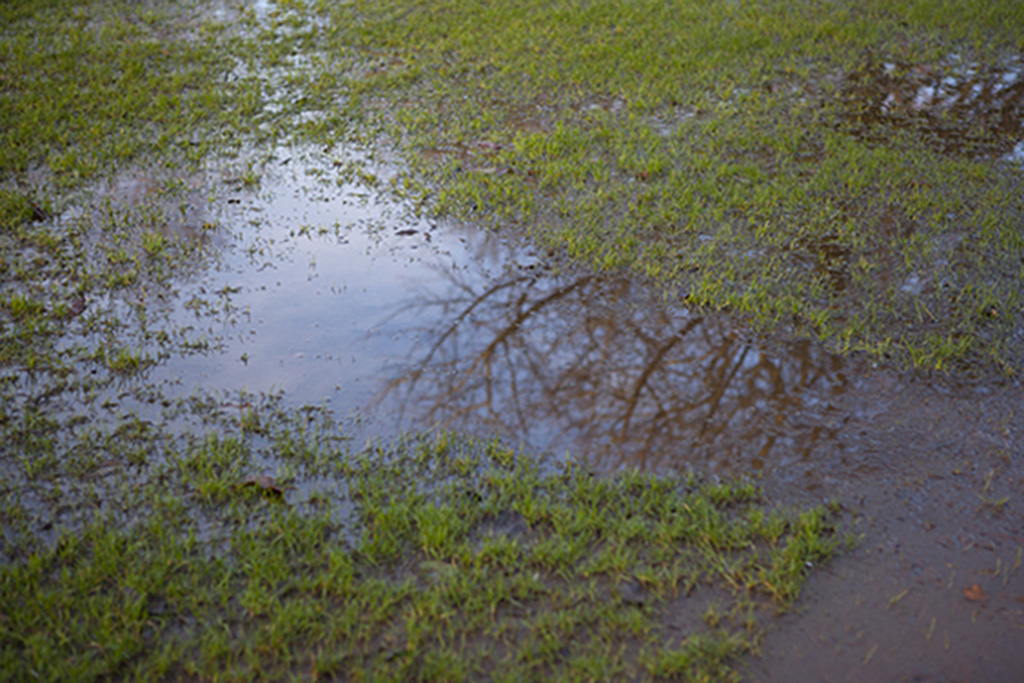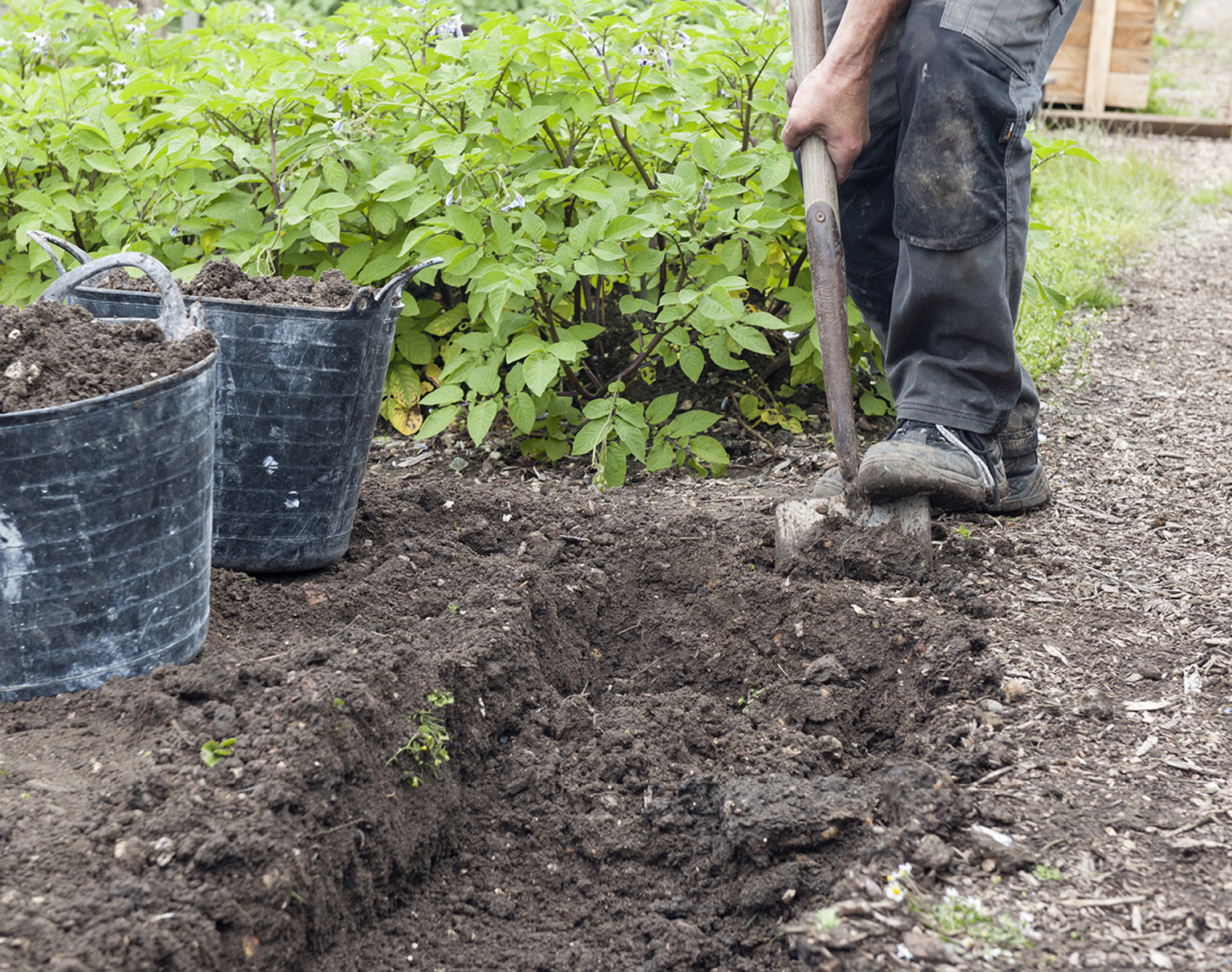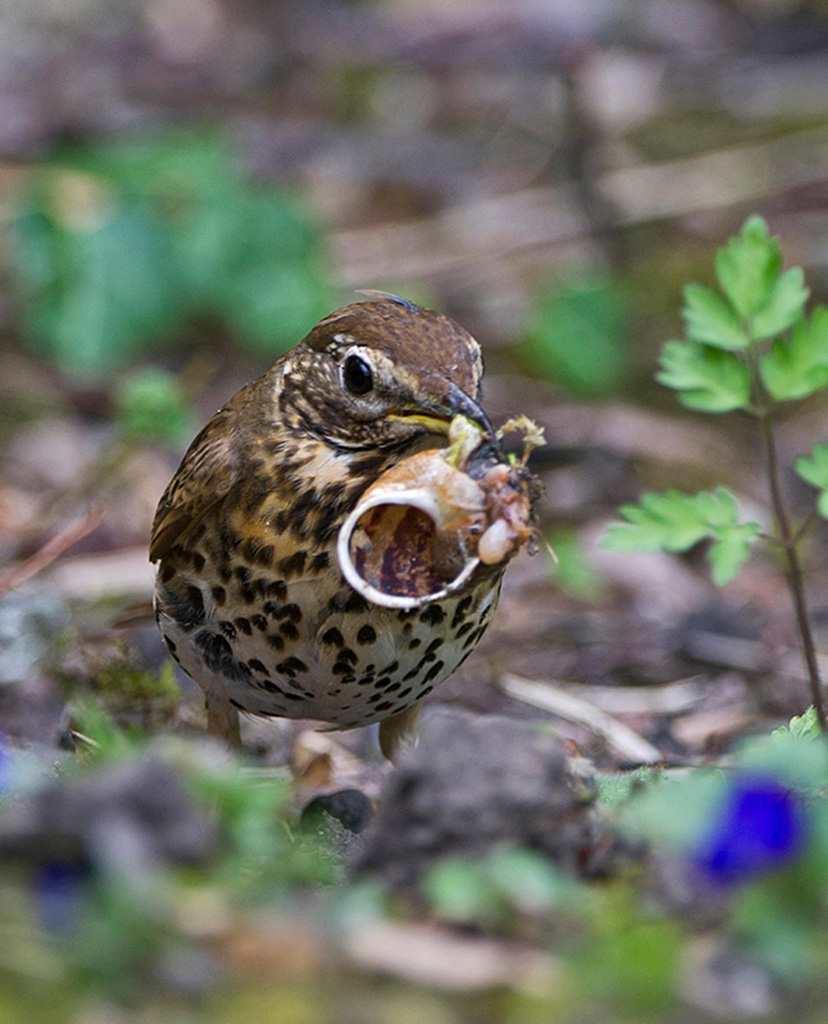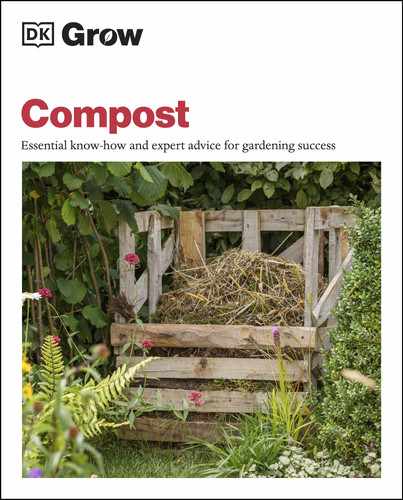WHAT IS MULCH?
The term “mulch” is used to describe a layer of organic or inorganic material which is laid over the soil to protect it. Organic mulches include homemade composts, animal manures, and wood chips, while inorganic types could be gravel, shingle, or even plastic sheets. Protecting your soil from drying out in hot, sunny weather or washing away in floods after a storm are two major benefits, but mulching with organic materials can offer even greater rewards, helping to increase the productivity of both edible and ornamental gardens as it slowly rots down further.

Spreading organic matter on the surface of the soil insulates it from fluctuating air temperatures.
MULCHING BENEFITS
The practice of protecting the soil with insulating materials has been used in agriculture for a thousand years or more and takes its cue from natural processes, where leaf litter falls on to the surface. Covering the soil lowers evaporation rates and locks in moisture, while also helping to keep roots warmer and less prone to frost damage in winter. Mulches also slow down the speed at which heavy rain hits the surface, allowing the water to seep into the soil slowly, which reduces the risk of localized flooding. Whether organic or inorganic, a mulch can also help to suppress weed growth, and may even kill off invasive types such as bindweed (Calystegia sepium) when kept in place for a long period.

Mulching helps to prevent waterlogging and soil erosion during and after heavy rain.
NATURAL BLANKETS
As well as protecting the soil, organic mulches such as homemade compost and leaf mold are taken down into the soil by worms, where they will continue to decompose and, as they do so, release plant nutrients. Their spongy texture also creates a cushioning effect, allowing you to tread on a compost mulch (when working on a vegetable bed, for example) without compacting the soil beneath it. Unlike inorganic mulches, you can also plant or sow seeds into a compost layer—the roots will soon reach down into the soil and stabilize the plants as the compost continues to decompose. The combined effects of worm activity, root growth, and the humus in compost, which binds soil particles together, will improve the delivery of nutrients and air to your plants, helping to increase crop yields and the vigor of ornamental plants. Long-term trials conducted in the UK showed that compost mulches applied over a seven-year period increased crop yields by 7 percent and the size and weight of the apples grown in an orchard.

Compost mulches can help to increase crop yields by 7 percent.
DIGGING VS. NO DIGGING
Applying mulches rather than digging in compost to improve a soil is known as the “no-dig method.” Traditional gardening techniques such as single- and double-digging require the gardener to dig a series of trenches deep into the soil and refill them with a mixture of the excavated soil and well-rotted compost or manure. However, recent research suggests that this practice can adversely affect the soil structure, breaking up the intricate network of fungal strands that bind the particles together and create passageways for air and water. The mycorrhizal fungi that wrap around or grow inside plant roots are also essential in feeding the majority of plants and crops, so breaking these down can affect growth, too. Digging is, of course, essential in some circumstances—to add plants to the soil or for some composting methods, for example—but you should try to minimize soil disturbance as much as possible once plants are established.

Digging the soil can break up networks of fungal strands that build healthy soils by binding the particles together.
MULCHING PROBLEMS AND SOLUTIONS
Most gardeners experience few problems when they apply an organic mulch to their beds and borders. However, very occasionally a wood chip mulch may introduce a fungal disease such as honey fungus, and shredded freshly cut stems may temporarily remove nitrogen in the upper layers of the soil, as microbes that decompose the woody material use up reserves of this plant nutrient.
The solution is to store fresh wood chips separately for 3–4 months before applying them to the soil. Signs of any fungal diseases will appear during this time, allowing you to dispose of affected materials. Leaving the chips to rot for a while also allows the decomposition that uses up nitrogen to take place away from your crops and plantings. However, if you cannot wait or have no space to store wood chips, you can still use them as a mulch around mature plants, whose roots are deeper in the soil and will not be affected by nitrogen deficiencies. Just try to make sure the trees or shrubs from which you have taken stems show no signs of disease. Some studies have also found that a wood chip mulch will actually help to increase nitrogen levels in the soil over the longer term.
Plant pests such as slugs and snails may find a warm home beneath a mulch, but they will soon attract predators, such as birds and beetles, which will help to keep these mollusks in check.
TOP TIP DO NOT USE SHREDDED LUMBER OR CHIPBOARD AS A MULCH. THESE MATERIALS MAY CONTAIN ARSENIC, CHROMIUM, OR SYNTHETIC RESINS THAT WILL HARM YOUR PLANTS.

Thrushes soon seek out snails and slugs that may be hidden beneath a mulch.
